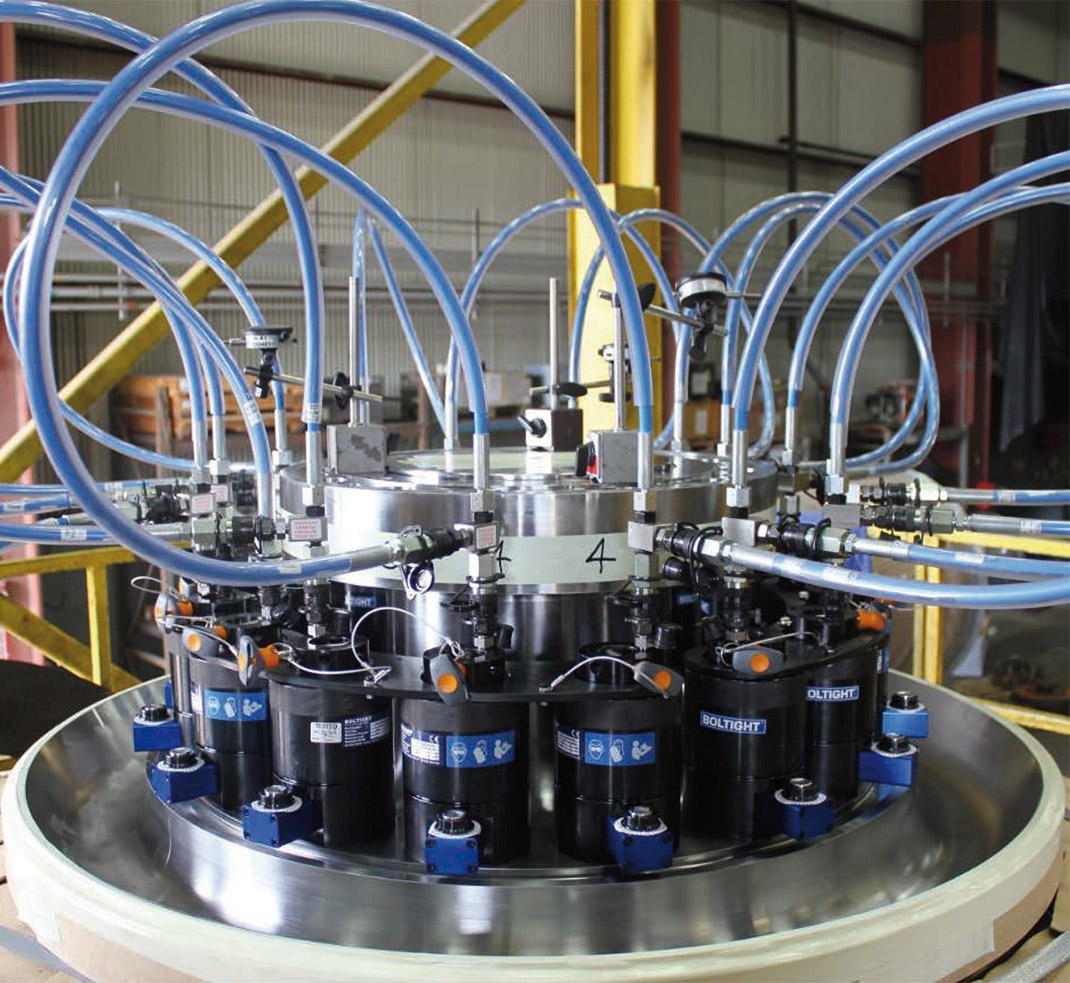What are the key advantages of hydraulic tensioners?
A hydraulic bolt tensioning tool provides a quick, easy and safe method for tightening large diameter bolts to high and accurate preloads. It does not use torque or require forceful turning of the nut or bolt, like impact wrenches, flogging spanners or hydraulic torque wrenches, where friction is a common enemy.
A hydraulic bolt tensioner is an annular jack, which fits over the bolt and nut to be tightened. The jack pushes against the bolted joint and pulls on the end of the bolt. Because the force produced by the jack is applied directly to the end of the bolt, a tension equal to the load generated by the jack is developed in the shank of the bolt. With the jack applying tension, it is possible to rotate the nut with zero torque until it is tight. The load applied by the jack is then relaxed and a high percentage, depending on the length of the bolt and its diameter, is retained in the shank of the bolt.

Hydraulic bolt tensioning provides:
- Accuracy – very high bolt load tolerance accuracies, often 5% or better. No frictional losses to consider nor need for lubrication. Easy to calculate load transfer and to prevent overload.
- Speed – the tools are remarkably fast to install and operate.
- Simultaneous tensioning – multiple bolt tensioners can be hydraulically actuated at the same time.
- Uniformity – tensioning several bolts at the same time guarantees the same applied load to each bolt.
- Safety – no pinch points or reaction issues. The safety engineered into Boltight systems surpasses the industry safeguards.
- Versatility – using adaptor kits, one tensioning kit can often be used to cover a large variety of bolting sizes.
- Cost efficiency – combining the factors above, hydraulic bolt tensioning provides operational value for the customer.






